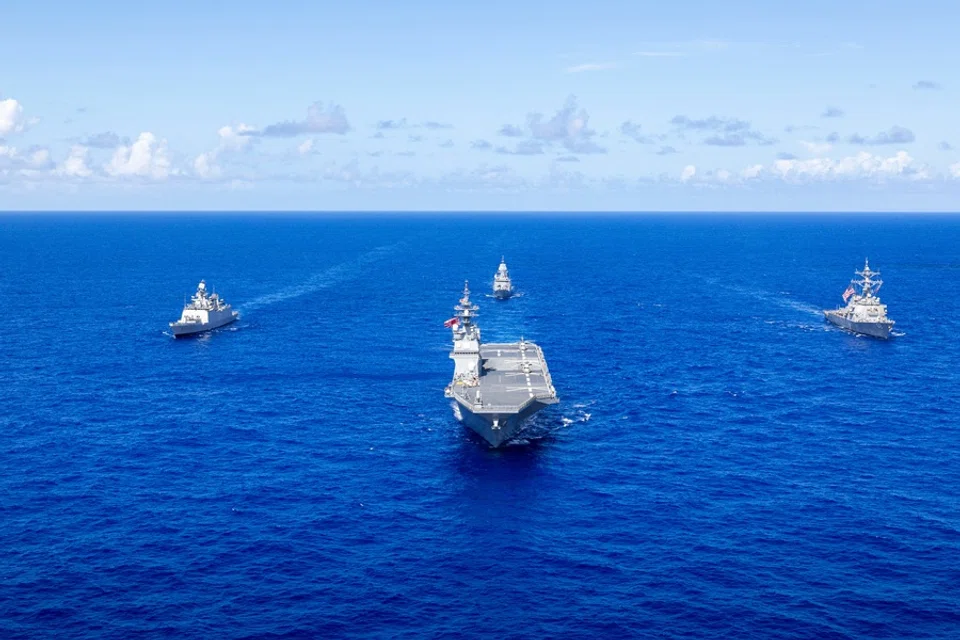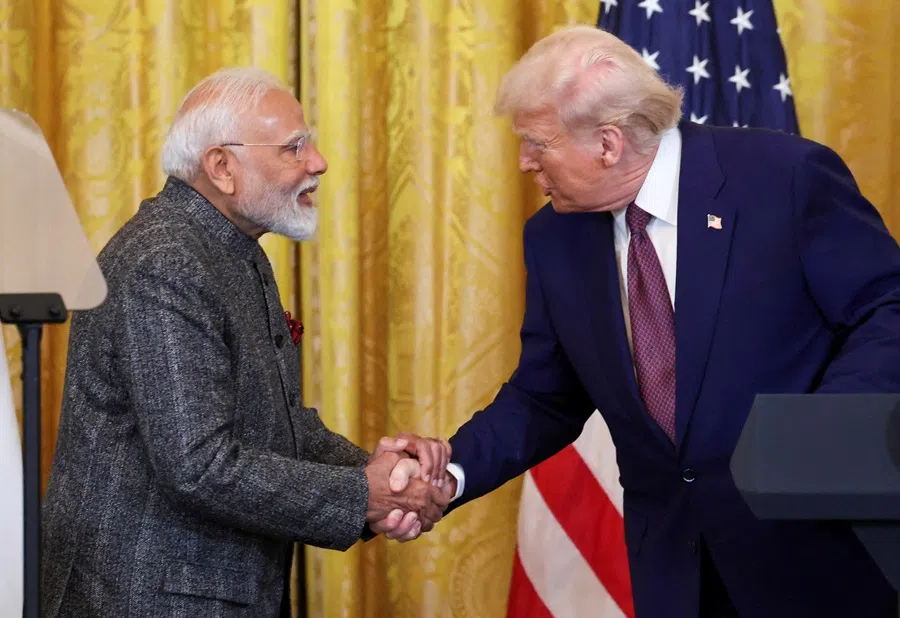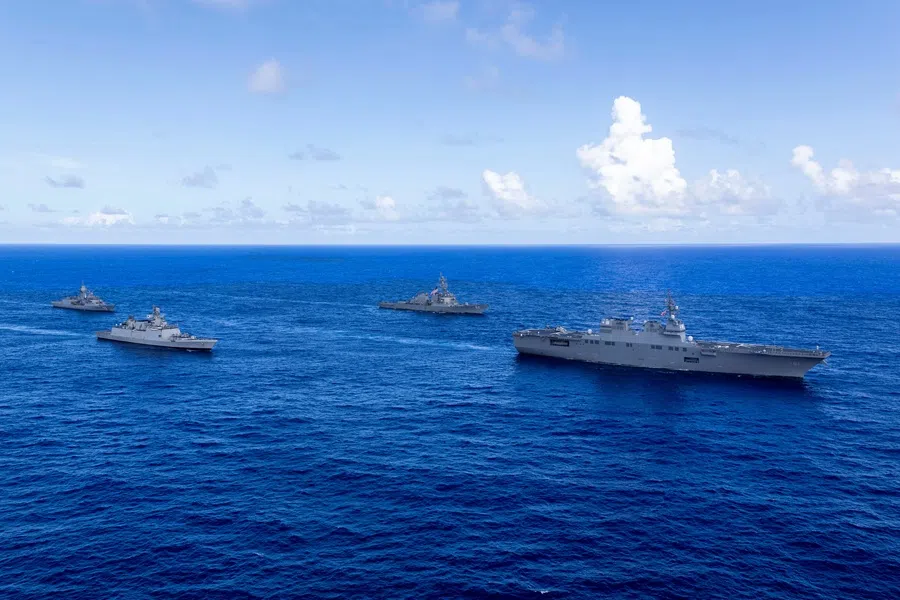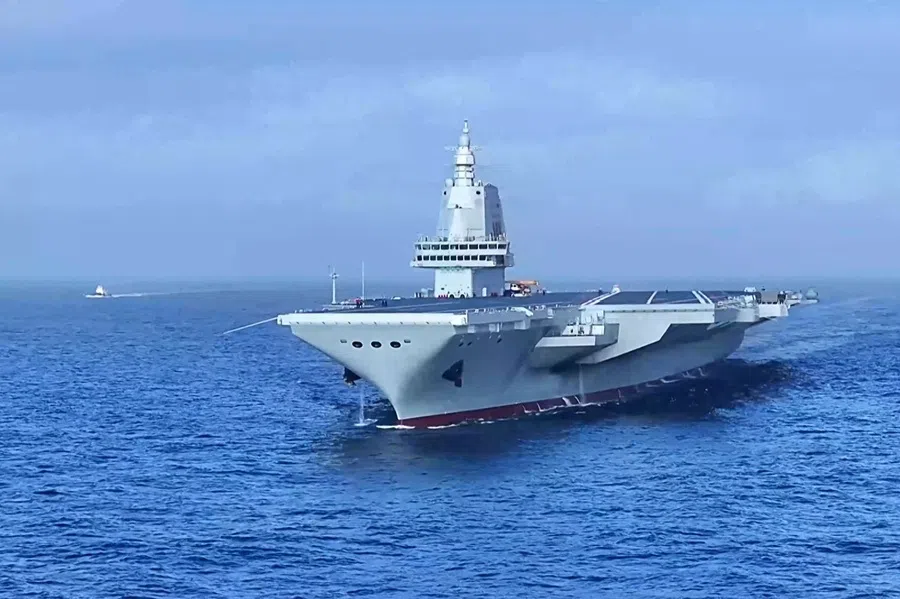Malabar 2025: Proof that the Quad still works when the politics doesn’t
Despite political rifts among the Quad countries, the recent annual Malabar naval exercise which went ahead means that the Quad grouping is still relevant where it counts most: enhancing joint military interoperability and preparedness on both sides of the Indo-Pacific. Manila-based analyst Don McLain Gill shares his views.

From 10 to 18 November, the four Quad countries — the US, Japan, India and Australia — held their annual Malabar naval exercise off Guam’s waters in the Pacific. This year’s iteration featured the participation of naval ships, aircraft and special forces of the US Navy, the Japan Maritime Self-Defense Force, the Indian Navy and the Royal Australian Navy.
Moreover, the 2025 Malabar featured sophisticated drills on anti-submarine and anti-air warfare. More importantly, however, these drills come at a time when the Quad countries have been experiencing political friction.
Military integration vs. strategic disunity
The Quad, which has its roots in 2004, was initially formed as a disaster response initiative in the Indian Ocean. However, this earlier version of the minilateral was short-lived due to the uncertainty over structural realities and the lack of political cohesion among the leaders of the four countries, particularly Australia.
When former Japanese Prime Minister Shinzo Abe resigned in 2007, the arrangement lost momentum further. India also began to distance itself from the four-way group, particularly as Beijing intensified its pressure on New Delhi. Additionally, the US was overwhelmingly fixated on its security interests in the Middle East during this period.
... its most important, yet not openly advocated, agenda is to enhance joint military interoperability and preparedness on both sides of the Indo-Pacific.
However, with greater clarity on the structural challenges posed by China’s assertive rise in what is now known as the Indo-Pacific region, the Quad was revived on the sidelines of the 2017 East Asia Summit. This revival was primarily driven by systemic pragmatism, given how all members have become first-hand witnesses to China’s coercive behaviour.
Unfortunately, much of the discussion about the Quad simply revolves around debates regarding its characteristics. Although there is still much conceptual confusion whether it should be framed as a provider of public goods, a security arrangement, or merely a cooperation of convenience, the Quad’s most undeniable purpose is to maintain the order of the Indo-Pacific and push back against China’s intent to alter the region’s security architecture freely.

While the Quad has introduced various programmes in the past few years, its most important, yet not openly advocated, agenda is to enhance joint military interoperability and preparedness on both sides of the Indo-Pacific.
Trump-Modi strains and the Quad
Nevertheless, the alignment of perceptions among the leaders of all four countries also helped expedite coordination and functional cooperation. Since 2021, leaders of the Quad countries have been meeting annually. However, a Quad summit this year is unlikely. While one may speculate about the reasons for the postponement, it is not hard to tell how one of the more pressing causes can be linked to the strained ties between New Delhi and Washington.
For New Delhi, US President Donald Trump’s approach to the US-India bilateral partnership is misguided, as he chooses to undermine decades of painstaking diplomatic confidence-building that elevated ties to their highest level. Interestingly, India has not been the only Quad country to face difficulties with the current leadership in Washington, albeit to a lesser extent.
While Trump has managed to push America’s European allies to increase their defence spending to 5%, he was unsuccessful in communicating this objective with its key Indo-Pacific allies, such as Japan, due to the rash and disorganised approach Washington employed in setting requirements for its Indo-Pacific allies. Consequently, to illustrate Tokyo’s dissatisfaction with Trump’s recent handling of the bilateral relationship, former Japanese Prime Minister Shigeru Ishiba abruptly withdrew from the North Atlantic Treaty Organization (NATO) summit in the Netherlands at the last minute.
Going back to India, Trump’s insistence on singling New Delhi out for its imports of Russian energy resources by imposing tariffs and warming up Pakistan has not been well received in New Delhi. Hence, prior to a trade deal, it is unlikely that Trump would visit India.
There is speculation that Indian Prime Minister Narendra Modi decided not to attend the Association of Southeast Asian Nations (ASEAN) summit in Malaysia last month, partly due to these tensions. Additionally, Modi’s attendance at the G20 summit in South Africa in November could also be linked to Trump’s absence from the meeting. Nevertheless, these political rifts, though disruptive, are not enough to demolish the most vital function of the Quad, which is to deter China’s unilateralism in the Indo-Pacific.
China enjoys escalation dominance over the South China Sea and has been steadily increasing its assertive manoeuvres in the East China Sea and Yellow Sea.
Pragmatism driving Quad defence integration
The success of Malabar 2025 demonstrates the maturity of the Quad countries to stay on course in critical and functional areas of defence cooperation, despite political headwinds. Doing so has become increasingly crucial as China continues to solidify its two-ocean strategy on both sides of the Indo-Pacific.
China enjoys escalation dominance over the South China Sea and has been steadily increasing its assertive manoeuvres in the East China Sea and Yellow Sea. Similarly, China has been expanding its presence in the Indian Ocean through its maritime forces.

The structural costs have become too high for Quad countries to ignore. While the Quad is not an alliance with mutual defence commitments, enhanced interoperability and joint preparedness cooperation among the major powers of the Indo-Pacific would still go a long way in challenging China’s unilateral activities in the region.
If the four democracies do not look beyond petty politics, they will inadvertently hand over more strategic space for China to operate freely. Compared to the early 2000s, the structural shifts today would have significant consequences for all four countries if they lose sight of the bigger picture.
Another important example of the Quad’s strategic pragmatism in strengthening defence coordination also took place in the first week of November, coinciding with Malabar. Under the banner of this year’s Cope India, a bilateral air force exercise between the Indian and US air forces, where all four Quad countries came together for the first time.
While Japan gained observer status in 2023, Australia took part for the first time as an observer. Ultimately, the goal would be to create the right conditions to integrate Japan and Australia as active participants, similar to how the Malabar exercise was expanded to include all four countries. Doing so would be a significant step towards integrated military preparedness and an added layer of defence cooperation beyond just the land and maritime domains.
Cautious optimism
While structural conditions have enabled the Quad to deepen its shared defence outlook, the convergence of perceptions among state leaders helps fast-track and expand the scope and scale of collaborations. Fortunately, there is optimism surrounding the status of India-US relations. On 31 October, both countries renewed a ten-year Defence Cooperation Agreement (DCA), which was first signed in 2005. This ensured the relative continuity of bilateral security engagements despite concerns in the economic domain.
... while India’s arms imports from Russia have decreased from 62% to 34% between 2017 and 2023, India’s defence trade with the US has risen from close to zero to US$20 billion.

On trade, New Delhi said that it had concluded a significant deal with the US in the energy sector. This may lead to India importing up to 10% of its liquefied petroleum gas needs from the US. This breakthrough has also led to the exclusion of several farm goods from Trump’s reciprocal tariffs.
Additionally, Washington had also approved a US$92.8 million arms deal with New Delhi, which includes Javelin anti-tank missiles and Excalibur precision artillery projectiles. Along with a steady commitment to defence cooperation, the deal could also be part of broader trade negotiations aimed at reducing the US’s trade deficit with India. It is also worth noting that while India’s arms imports from Russia have decreased from 62% to 34% between 2017 and 2023, India’s defence trade with the US has risen from close to zero to US$20 billion.
Ultimately, the Indo-Pacific is better off with a Quad than without it.
While these trends are promising, much remains uncertain given the rash foreign policy approach of the Trump administration. However, it is also crucial not to overstate the impact of Trump’s behaviour towards New Delhi on the long-term trends in India-US security relations.
Nevertheless, any breakthrough in trade relations would contribute positively to the function of the Quad. In this light, it is crucial to adopt a multi-stakeholder approach to ensure continuity in the four-way arrangement’s critical agenda in the event of further political disruptions. Ultimately, the Indo-Pacific is better off with a Quad than without it.





